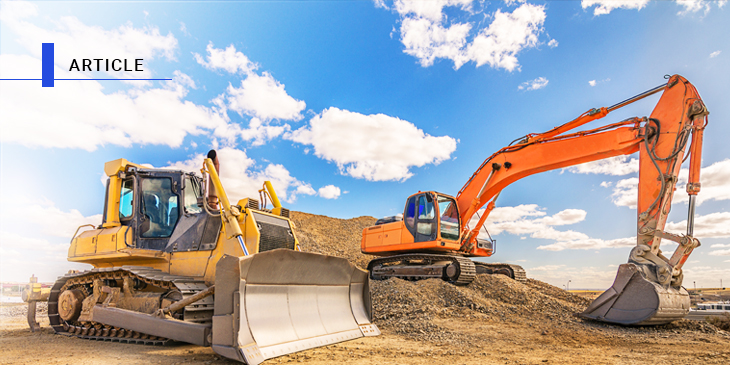
After a 10.4% contraction in 2020, the construction sector is tipped to grow by 7.1% this year. That’s due to our nation’s $14 billion investment for accelerated projects including shovel-ready transport and road safety works, says Infrastructure Australia in its latest report.
Earthmoving is a risky business
But, in the earthmoving sector, there’s a wide range of work risks through excavations, potholing, pit excavations, shafts and drives or trenches and retaining walls. These include:
- Rupturing essential services underground such as pressurised gas, chemical, fuel or refrigerant lines, water, electrical power, or telecommunications
- Plant or equipment failure, overturning vehicles or collision
- Unauthorised access to the building site
- Ground collapse, buried contaminants (such as asbestos) or water rush-in
- Hazardous manual tasks or falls or other injuries to workers or site visitors
- Using explosives as part of the earthmoving process adds another layer of danger.
Controlling risks involves the principles of elimination, substitution, isolation, engineering controls, administrative controls, then personal protective equipment. Here’s an example of a four-page earthworks risk management procedure.
Preventing falls from equipment
In Queensland last August, a man who may have been doing maintenance on an earthmoving machine, fell and suffered severe injuries. Worksafe Queensland’s initial investigations reveal he might have fallen while exiting the machine. That organisation advises having safe-work procedures on carrying out inspections, shut-down, cleaning, repair and maintenance and emergency procedures.
Meanwhile, WorkSafe Victoria points to these ways of preventing falls from equipment:
- Integrated guardrails
- Scaffolding
- Elevating work platforms
- Fixed work platforms
- Special vehicles for servicing that offer safe access.
If you can’t do these reasonably on your worksite, try a work positioning system. That could involve designated anchor points, harness with a rated fall arrest, worker training, better supervision and clear procedures.
Keeping your equipment up to scratch
The earthmoving sector uses graders, scrapers, bulldozers, and excavators to do the ‘grunt’ work. It may also use lasers, powered mobile plants, hydraulic jacks, jackhammers, scaffolding, ladders, air compressors, electric generators as well as manual tools such as pinch/lever bars, shovels and picks.
No doubt, you’re ready for your regular, planned inspection and any maintenance that’s in line with manufacturers’ recommendations whether you lease, hire or own the equipment. Consider also:
- Daily site checks including on trenches, as well as atmosphere tests before you start work – here’s a free checklist to print off
- Regular checks by someone the relevant Australian Standards or manufacturer/supplier deem to be competent
- A swift defect-reporting system and follow up
- Ensuring your logbooks and inspection check sheets are current and show the full service and repair history.
The risk of ground collapse
Excavation failures are especially dangerous. They can happen quickly, making it difficult for workers, and others nearby, to escape if there’s an extensive collapse. Safe Work Australia highlights three control measures:
- Benching and battering
- Positive ground support such as shoring
- Shielding, which aims to protect workers from collapsing material falling onto them.
Bolstering your risk profile
As your broker/adviser, we’re able to support your business with an insurance package customised for the earthmoving sector. This cover includes:
- Public liability insurance. This protects you and your business if you’re found liable for negligence if a third party is injured (or worse), or suffers property or financial loss
- Work vehicle insurance. This includes commercial trailer insurance and tools insurance, if required
- Cover for equipment, machinery and mobile plant. You can opt for cover for downtime, substitute hire, business interruption, damage waiver and road risk liability
- Income protection insurance. This is handy if you have an accident – common policies give you up to five years of financial benefits – or, if you’re too unwell to work – up to two years’ financial benefits.
You could also reduce your risk profile by minimising the equipment you own and leasing rather than owning premises. We can help you scrutinise your documentation and procedures to tighten up your risk management.
